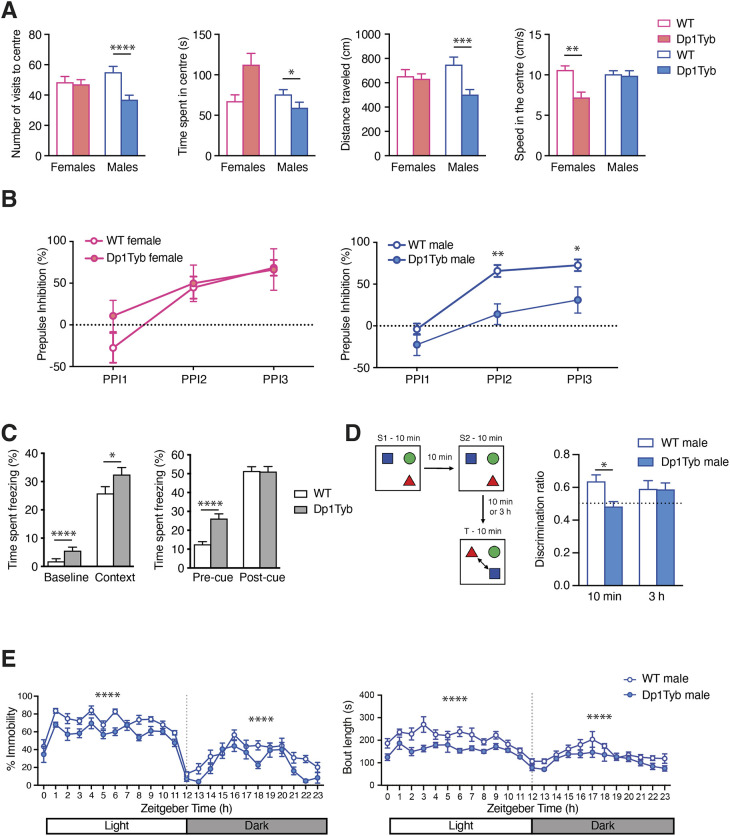Fig. 7.
Decreased open field activity, sleep and object-in-place memory in Dp1Tyb mice. (A) Mean±s.e.m. number of visits in the centre, time spent in the centre, distance travelled in the centre and speed in the centre of mice in cohort 2 undergoing the open field test. (B) Mean±s.e.m. pre-pulse inhibition in WT and Dp1Tyb mice (cohort 1) of a response to a startle tone (110 dB) to increasing volumes of pre-pulse tones (55, 65, 70 dB; PPI1 to PPI3). (C) Fear conditioning test on WT and Dp1Tyb mice in cohort 2, showing mean±s.e.m. time spent freezing in response to being placed in a chamber associated with aversive experience (context) compared to response to the same chamber before conditioning (baseline), and also freezing time in a novel chamber before (pre-cue) or after (post-cue) being given an auditory tone associated with an aversive experience. (D) WT and Dp1Tyb mice (cohort 6) were placed in an arena with three different objects for two 10 min sampling periods (S1, S2), then tested after a delay of either 10 min or 3 h for their ability to recognise which objects had changed location (T, test phase). There were no differences between groups in object contact times during the sample phase. The discrimination ratio (mean±s.e.m.) measures the preferential interaction with switched objects compared to the unchanged object for mice tested after a 10 min or 3 h delay. A ratio of 0.5 (dotted line) indicates performance at chance level, with no associative object-in-place memory. (E) Mean±s.e.m. percentage immobility or length of immobile bouts of WT and Dp1Tyb mice (cohort 2) as a function of time, showing the light and dark phases of a 24 h period. Immobility is taken as a proxy of sleep. *0.01<q<0.05; **0.001<q<0.01; ***0.0001<q<0.001; ****q<0.0001.

